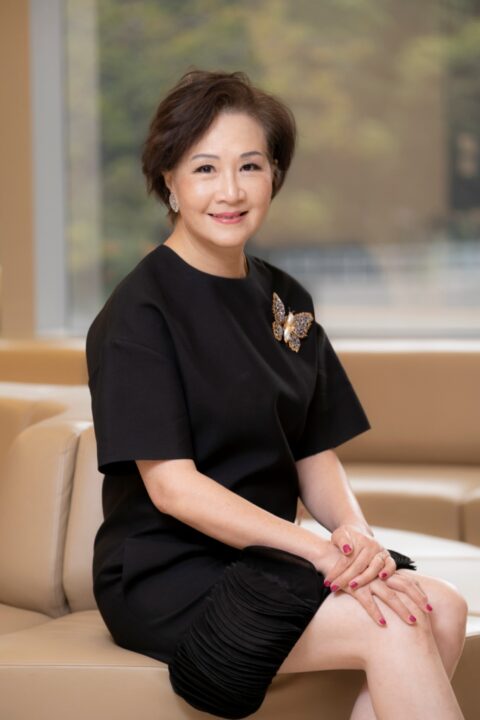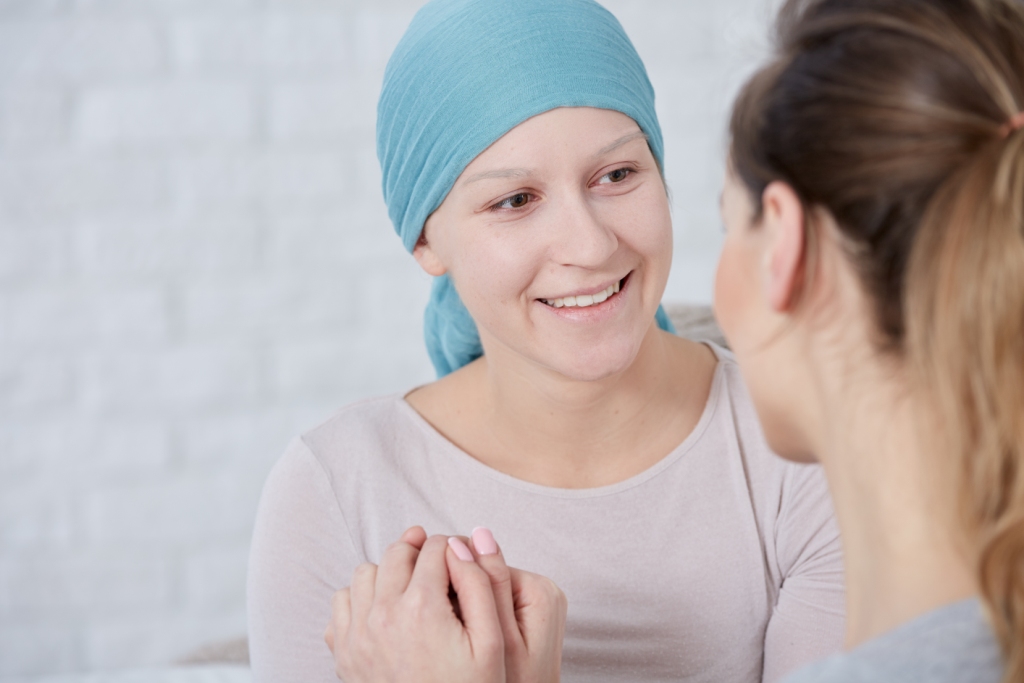Receiving news about a cancer diagnosis may feel like the sky is falling upon you. Though, receiving the news from your doctor is just the beginning of a new journey of medical treatments and recovery.
The hard truth is that the cancer battle is never easy but the burden of a cancer patient and their caregiver(s) can be reduced significantly when cancer care is integrated and accessible.
Imagine receiving complete cancer care under one roof as compared to having to shuffle between medical centres and travelling to appointments from one corner of the city to another. There is no doubt that integrated cancer care could help to reduce the cancer burden as well as motivate patients to receive the treatment they need. This approach does not only help a cancer patient physically, it does have a positive psychological and emotional impact too.

The Integrated Oncology Centres (IOC) was established by medical professionals in 2015 to meet the gaps of the way cancer treatment is delivered to patients such as having to receive treatment from multiple medical centres. Phoebe Ho, Chief Executive Officer of IOC, shares all about IOC’s plan to increase the accessibility to integrated cancer care in Asia.

1Twenty80: What is integrated cancer care?
Phoebe Ho: Cancer is a disease which requires the input of multiple care providers to meet a patient’s needs. A typical cancer patient may have to undergo various treatment modalities from the time he or she is diagnosed with cancer right up to surgery, chemotherapy, radiotherapy, nutritional counselling to psychological counselling.
There are certain gaps in the current healthcare system as the patient navigates his or her way through the cancer treatment journey. One of the gaps is the lack of cancer treatment facilities that offer all treatment modalities under one system or centre. Hence, patients are left to coordinate their own care, moving from one provider to another. This causes frustration because patients have to deal with inconsistencies and lack of communication between them and the healthcare provider, leading to fragmentation in the whole cancer treatment journey.
Integrated cancer care is an approach where all treatment modalities are linked together in a coordinated way to provide the best treatment for the patient. Integrated cancer care provides a seamless way for patients to receive cancer treatment, helping them make informed decisions with a team of doctors and healthcare professionals journeying with them from day one.
An integrated approach helps treat the patient with surgery, chemotherapy, radiotherapy, while also supporting their emotional and physical needs with other services such as psychological, nutritional counselling. This approach brings a group of healthcare professionals together to provide comprehensive, seamless cancer patient pathways that is not just a doctor’s decision but a whole team instead.
For example, at Integrated Oncology Centres (IOC), we provide services such as diagnostics, surgery, radiation therapy, chemotherapy and post cancer care within our network of clinics and treatment centres. Throughout the patient’s cancer treatment journey, they have direct access to a multidisciplinary team of doctors and healthcare professionals who work collaboratively to provide treatment and information for the patient. By providing the right information, developing effective communications and empowering patients to take charge for their cancer treatment journey, IOC is able to positively impact their patients’ experience throughout their cancer journey.
Integrated cancer care is an approach where all treatment modalities are linked together in a coordinated way to provide the best treatment for the patient.
1Twenty80: How is integrated cancer care different from traditional patient care?
Phoebe: Under the traditional cancer patient care pathway, most of the time, the cancer patient would have to coordinate and plan their own treatment journey. They might have to seek different healthcare providers depending on the complexity of their disease. Patients might encounter the frustration of gathering information from multiple sources, miscommunication or hassle of travelling from one provider to another.

The integrated cancer approach brings together all the treatment modalities, making it a seamless journey for the patient. Patients have access to a comprehensive suite of cancer treatments, delivered by a team of medical doctors, nurses and other allied healthcare professionals and not just by one single doctor. Integrated cancer care cancer care is designed around the needs of the patient and evidence suggests that an integrated approach can improve quality and reduce the cost of healthcare, and ultimately improve health outcomes.
IOC aims to improve patient care in Asia by connecting doctors and healthcare professionals under one network and increase accessibility of patients to integrated cancer care especially in countries or areas in Asia where access to quality cancer facilities is not as convenient.
1Twenty80: Could you share with us the role of IOC in improving patient care in Asia?
Phoebe: According to global cancer data, in 2018 the global cancer burden increased to 18.1 million cases and 9.6 million cancer deaths with almost half of new cancer cases and more than half of the cancer deaths being reported from Asia. It is expected that Asia will have a surge of around 35% of cancer patients with an increase in the mortality rate of 40% by 2030.

Bringing hope and quality to cancer care in Asia, Integrated Oncology Centres (IOC) is one of the region’s first connected oncology networks that aims to develop a cohesive, integrated and multidisciplinary approach to the provision of cancer care for patients.
IOC aims to improve patient care in Asia by connecting doctors and healthcare professionals under one network and increase accessibility of patients to integrated cancer care especially in countries or areas in Asia where access to quality cancer facilities is not as convenient. When such an integrated approach is set in place, it answers the current challenges of fragmentation in cancer care that we are currently observing in Asia and ensures that patients receive the right treatment at the right time.
1Twenty80: How has the covid-19 pandemic changed patient care among cancer patients?
Phoebe: In South East Asia, research has shown that over 2 million people were diagnosed with cancer in the year of 2020.3 With the emergence of COVID-19, all eyes have been focused on managing the public healthcare crisis at hand, that the silent struggle of the community facing cancer may have been overlooked.
Based on research, those with pre- existing co-morbid conditions are most likely to experience COVID-19 more severely. That said, cancer patients are estimated to have a twofold risk after contracting the virus as compared to the general population.4 Cancer patients regularly go through treatment for their cancer, and this may render them more immunocompromised, exposing them to a higher risk of complications.
Further complicating things for patients is their treatment routine. What was seemingly easy and ordinary before becomes a challenge because this aspect is greatly affected as healthcare providers need to implement numerous protective measures such as swab tests and social distancing.
Furthermore, cancer patients as a whole may need to make alterations or postponements to their treatments such as surgery, radiotherapy, chemotherapy or immunotherapy in order to minimize their risk of contracting COVID-19. Unfortunately, the necessary adherence to such SOPs will lead to interruptions of their treatment plans. This will create a feeling of anxiety and frustration – none of which are conducive to their well-being.
That said, at IOC we have carefully crafted a unique algorithm with the initiatives of our Medical Director, Dr Misael Cruz, Central Luzon Integrated Oncology Centre (CLIOC, Philippines to help triage patients for them to safely receive treatment they require even with the Standard Operating Procedures (SOP’s) in places. Our triaging system not only equips healthcare providers, but also provides a better work-flow and tracking system for patients.

Our triaging system not only equips healthcare providers, but also provides a better work- flow and tracking system for patients.
1Twenty80: What are some of the future plans for IOC?
Phoebe: Within the APAC region, our plans will be to continue to recruit doctors and expand our service offerings within our existing centres. We also plan to continuously increase the usage of telemedicine across the region. The implementation of the tele-oncology platform, especially in view of the current pandemic globally will benefit patients and doctors as medical reports are sorted out digitally and doctors can access cloud-based imaging of patients immediately, in a safe and secure system.

In Malaysia, IOC seeks to increase accessibility for patients to quality cancer treatment. IOC has formed a partnership with Beacon Hospital to deliver efficient and high-quality oncology care in 2020. Partnering with Beacon, plans are in the pipeline to increase accessibility to outpatient cancer services especially in states where oncology services are provided by visiting doctors from other states in both public and private settings.
Based on IOC’s internal patient survey, 75% from patients prefer to receive treatment closer to home. Hence, IOC plans to build oncology outpatient centres closer to their homes and enhance cancer treatment accessibility.
References:
https://www.uicc.org/news/global-cancer-data-globocan-2018
[Full text] Cancer Care Management During the COVID-19 Pandemic | RMHP (dovepress.com)














